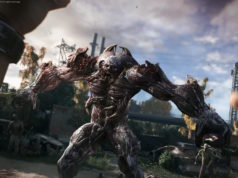Deep learning vs. machine learning: what’s the difference between the two? We provide a simplified explanation of both AI-based technologies.
In recent months, Microsoft, Google, Apple, Facebook, and other entities have declared that we no longer live in a mobile-first world. Instead, it’s an artificial intelligence-first world where digital assistants and other services will be your primary source of information and getting tasks done. Your typical smartphone or PC are now your secondary go-getters.
Backing this new frontier are two terms you’ll likely hear often: machine learning and deep learning. These are two methods in “teaching” artificial intelligence to perform tasks, but their uses goes way beyond creating smart assistants. What’s the difference? Here’s a quick breakdown.
Computers now see, hear, and speak
With the help of machine learning, computers can now be “trained” to predict the weather, determine stock market outcomes, understand your shopping habits, control robots in a factory, and so on. Google, Amazon, Facebook, Netflix, LinkedIn, and more popular consumer-facing services are all backed by machine learning. But at the heart of all this learning is what’s known as an algorithm.
Simply put, an algorithm is not a complete computer program (a set of instructions), but a limited sequence of steps to solve a single problem. For example, a search engine relies on an algorithm that grabs the text you enter into the search field box, and searches the connected database to provide the related search results. It takes specific steps to achieve a single, specific goal.
Machine learning has actually been around since 1956. Arthur Samuel didn’t want to write a highly-detailed, lengthy program that could enable a computer to beat him in a game of checkers. Instead, he created an algorithm that enabled the computer to play against itself thousands of times so it could “learn” how to perform as a stand-alone opponent. By 1962, this computer beat the Connecticut state champion.
Thus, at its core, machine learning is based on trial and error. We can’t manually write a program by hand that can help a self-driving car distinguish a pedestrian from a tree or a vehicle, but we can create an algorithm for a program that can solve this problem using data. Algorithms can also be created to help programs predict the path of a hurricane, diagnose Alzheimer’s early, determine the world’s most overpaid and underpaid soccer stars, and so on.
Machine learning typically runs on low-end devices, and breaks a problem down into parts. Each part is solved in order, and then combined to create a single answer to the problem. Well-known machine learning contributor Tom Mitchell of Carnegie Mellon University explains that computer programs are “learning” from experience if their performance of a specific task is improving. Machine learning algorithms are essentially enabling programs to make predictions, and over time get better at these predictions based on trial and error experience.
Here are the four main types of machine learning:
Supervised machine learning
In this scenario, you are providing a computer program with labeled data. For instance, if the assigned task is to separate pictures of boys and girls using an algorithm for sorting images, those with a male child would have a “boy” label, and images with a female child would have a “girl” label. This is considered as a “training” dataset, and the labels remain in place until the program can successfully sort the images at an acceptable rate.
Semi-supervised machine learning
In this case, only a few images are labeled. The computer program will then use an algorithm to make its best guess regarding the unlabeled images, and then the data is fed back to the program as training data. A new batch of images is then provided, with only a few sporting labels. It’s a repetitive process until the program can distinguish between boys and girls at an acceptable rate.
Unsupervised machine learning
This type of machine learning doesn’t involve labels whatsoever. Instead, the program is blindly thrown into the task of splitting images of boys and girls into two groups using one of two methods. One algorithm is called “clustering” that groups similar objects together based on characteristics, such as hair length, jaw size, eye placement, and so on. The other algorithm is called “association” where the program creates if/then rules based on similarities it discovers. In other words, it determines a common pattern between the images, and sorts them accordingly.
Reinforcement machine learning
Chess would be an excellent example of this type of algorithm. The program knows the rules of the game and how to play, and goes through the steps to complete the round. The only information provided to the program is whether it won or lost the match. It continues to replay the game, keeping track of its successful moves, until it finally wins a match.
Now it’s time to move on to a deeper subject: deep learning.






